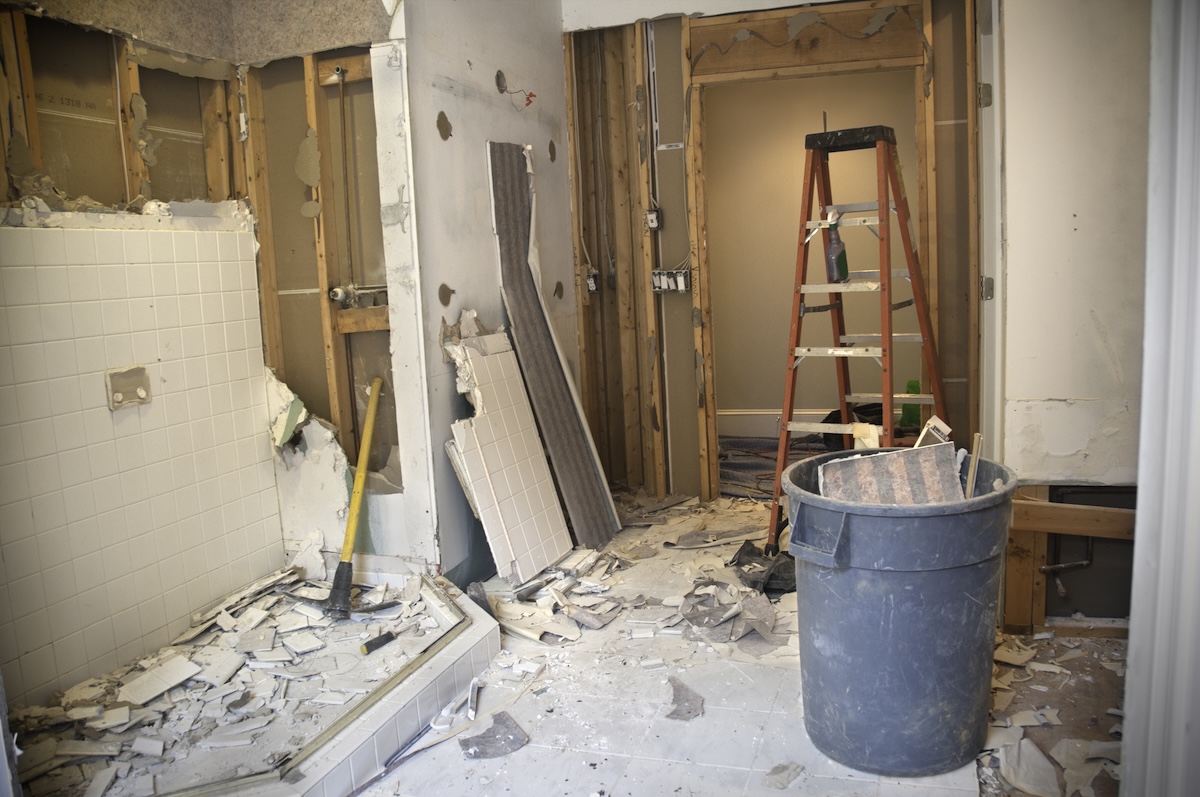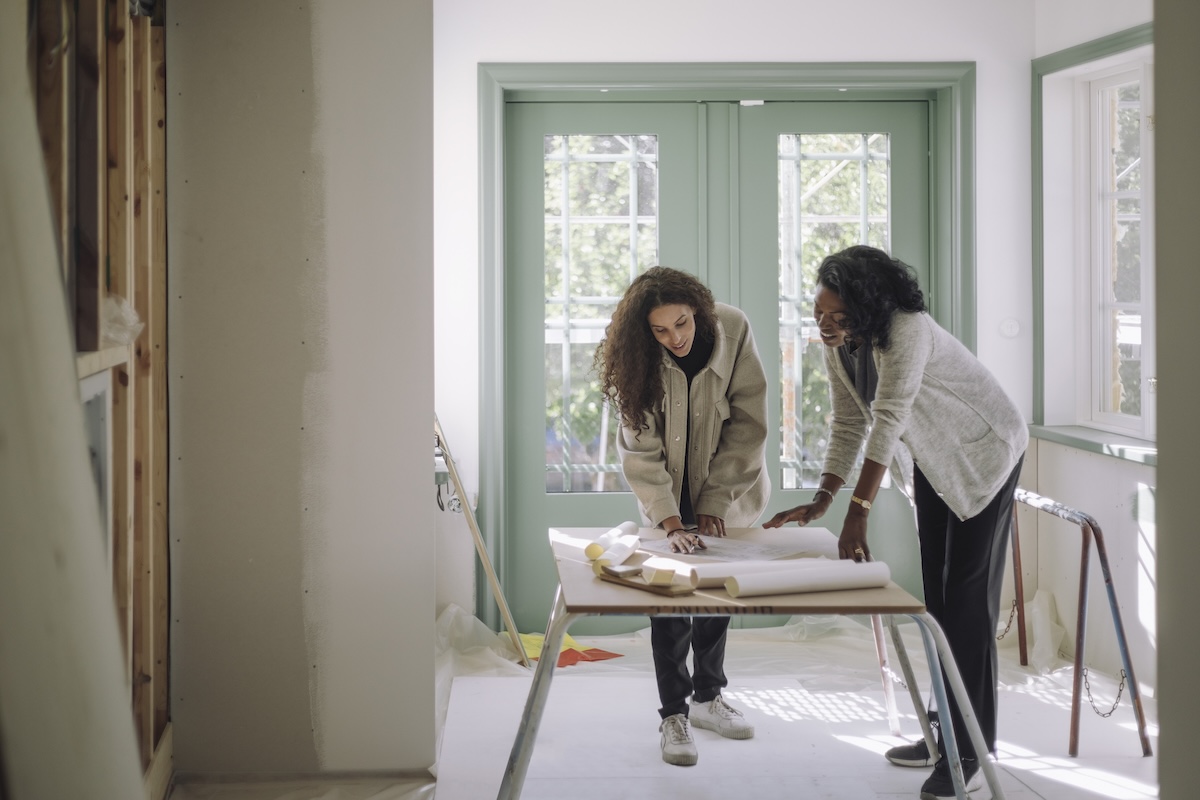We may earn revenue from the products available on this page and participate in affiliate programs. Learn More ›
Renovating a home—whether you’re DIYing, hiring contractors, or a combination of both—can be a long, stressful process with many bumps in the road. To ensure it goes as smoothly as possible, you’ll want to capture the details by taking renovation photos.
If you haven’t guessed by now, the one tool every homeowner needs during a home renovation project is a reliable camera. In this digital age, with so many camera options available (including on your phone), images speak volumes. Taking photos captures memories as you transform your home, plus those photos can be an indispensable resource for the entire renovation process from start to finish.
This article explains several reasons why it’s important to take a lot of photos before, during, and after a home renovation, especially the projects you’re DIYing.

Keep track of progress throughout the renovation project.
Probably the most obvious reason to bring out a camera during a renovation is to capture each step along the way. Progress pictures can help demonstrate what is happening and how quickly it is getting done. Seeing such accomplishments can help assure you that the project is moving along as planned or whether you need to step in and find out why the contractor’s progress is slow.
“I always tell people to snap pictures every single time they visit the job site—yes, even when the lighting is terrible,” says Alice T. Chan, an interior renovation and design specialist, professional home stager, and home-selling strategist with the Southeast home renovation company Freemodel, who was also the co-host and designer for HGTV’s reality real estate show, Power Broker. “It feels like nothing is happening, or it doesn’t seem worth it. Trust me, those photos can save you so much stress (and money) down the road,” she says.
Progress pictures can also help track who is completing which parts of the project, especially when the work involves multiple contractors. They can help you tell whether the plumber, electrician, general contractor, or a subcontractor worked on a specific part of your house so you’ll know who is responsible for any mistakes.
Finally, collecting photos can help you more effectively communicate with everyone involved in the project. You can provide clear feedback and avoid misunderstandings by sharing images with contractors.
Have a record of what lies beneath the surface.
Renovation photos also can help you record what’s in places you typically can’t see, such as wires and plumbing behind walls and flooring hidden under carpet. “Taking photos will help you keep track of where the nuts and bolts of the home lie as you peel away each layer,” says Natalie Warady, who styles, stages, designs, and renovates homes in Colorado.
“At each step of the process, you might need to reroute wiring or you might discover some hidden but important length of plumbing,” says Warady. When she found out that the only access to her bath plumbing was directly behind the kitchen cabinets, she had to reconfigure the kitchen design to accommodate access, and it helped to have pictures. “By keeping the images, you can track where you’ve been and also flag previously concealed areas that are important to know going forward in the process and if you need to gain access.”

Recall product details.
A very practical reason to take photos is to have a record of basic information like brand names, model numbers, and paint colors that you choose throughout the renovation. You might think it’s easy to remember, but if you take a slow approach to renovating, lots can happen in that time. Having pictures of what products look like and their item or model numbers might save you time and hassle down the road if you need to replace or repaint anything, especially if disaster strikes. It is helpful to date each picture and include notes such as in which room the item is, as well as when and where you purchased it.
Have visuals to show a contractor you may hire in the future.
Having photos of your home throughout one renovation can help if you ever decide to hire another contractor in the future. The photos create a visual record of the “before” and “after” that can help the next contractor fully understand what’s involved in the work they need to do. When you take pictures of pipes behind a wall, for example, this can inform a contractor whether work involves getting behind that wall. Not only will these images help the contractor better plan their work, but it can prevent an expensive mistake from occurring.
Help celebrate your home’s transformation.
Completing a renovation is extremely satisfying, and documenting the entire process can make it all the more meaningful. “Taking a variety of photos throughout each stage of a renovation gives you something tangible to look back on and remember just how much your home has grown and changed with you,” says Amber Brandt, an interior decorator at The Coziness Consultant. Friends and family may also appreciate reviewing the photos as they admire your newly refurbished home or if you have a renovation reveal open house.

Use the images if you decide to sell your home.
If you decide to put your house on the market, you’ll be grateful you have “before” and “after” photos to include in the listing. Showcasing the improvements you invested in might impress potential buyers and help you sell your home for a higher price and recoup a large percentage of the money you spent during the renovation. It also helps present the potential of the space in case the new owners want to make additional changes once they buy the house. Finally, the pictures can prove that you already addressed problems in the house, making it much easier for the buyers once they move in.
Share photos with permitting agencies and insurance companies.
In the event of damage or accidents during the renovation, it’s crucial to have pictures to send to the insurance company. Photos are also beneficial if you need to prove that you have taken steps to remedy a structural or building code issue that might affect permits or property insurance. Finally, images are also useful to submit along with a home warranty.


